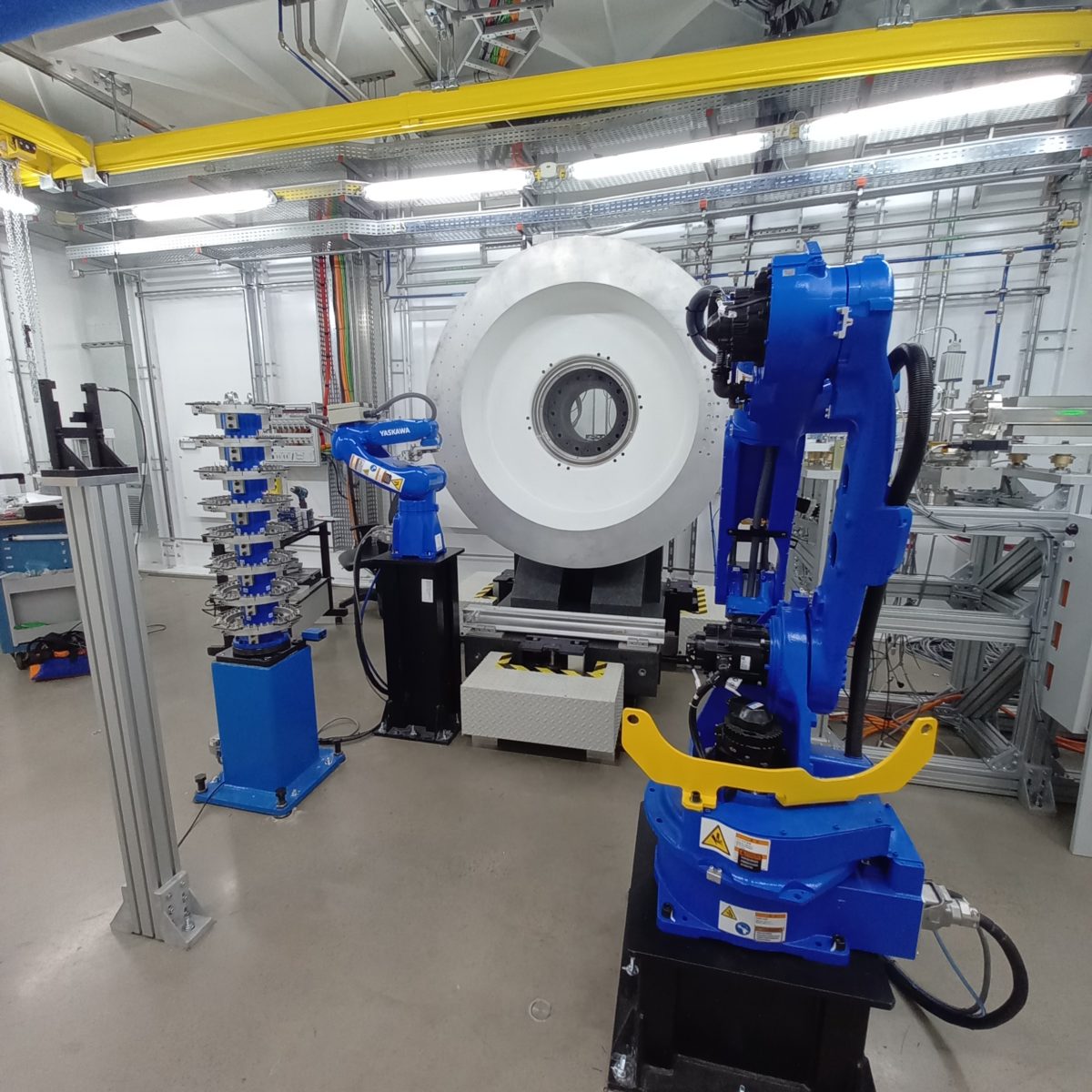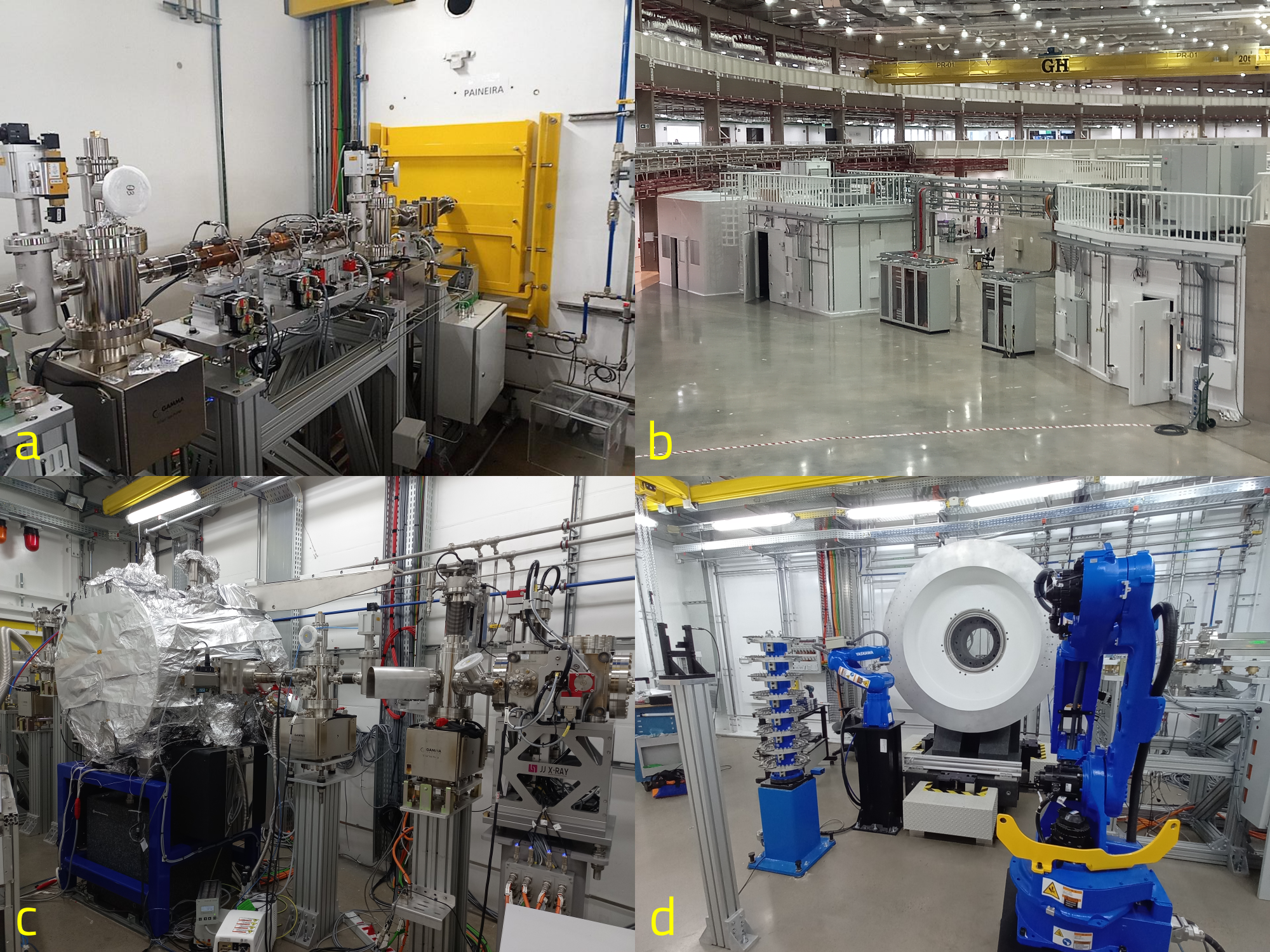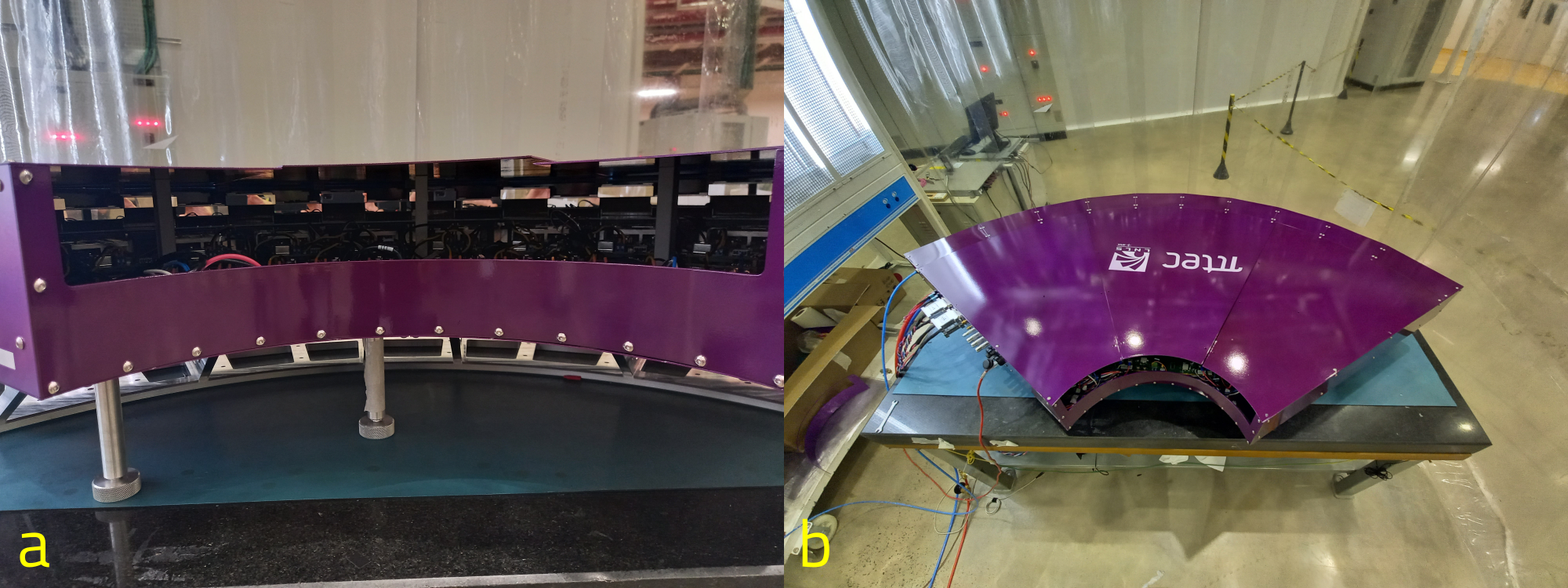
The beamline is dedicated to X-ray diffraction of polycrystalline materials and will operate in the energy range of 5 to 30 keV
PAINEIRA is one of the beamlines of the Sirius synchrotron light source, at the Brazilian Center for Research in Energy and Materials (CNPEM), a private non-profit organization under the supervision of the Brazilian Ministry of Science, Technology, and Innovations (MCTI).
The PAINEIRA beamline will be dedicated to X-ray diffraction experiments of polycrystalline materials (PXRD). It will combine the benefits of high brightness and low emission of a fourth-generation synchrotron light source with fast, sensitive, and high-resolution detectors to collect high-quality data.
Measurements will be performed in high-resolution mode (0.008° FWHM at 15 keV) and/or fast detection (10s; 0.05° FWHM at 15 keV), with beamtime optimization through automated sample exchange (high-throughput mode). In addition, the beamline will also provide different sample environments (sample holders, cells, devices, and accessories) for in-situ and operando experiments of functional materials.
In the first semester of 2022, the hutches and utilities for the PAINEIRA beamline were completed, allowing the start of component installation.
The front-end (Figure 1a) has been installed and awaits the installation of a wiggler to provide synchrotron radiation to the optical and experimental hutches (Figure 1b). The wiggler will act as a provisional X-ray source while the undulator is in production. Hutches, support rooms and electrical, network, and mechanical infrastructures have been completed. The installation of supports, slits, beam diagnostics and blocking valves, among others, have also been completed in the optical hutch (Figure 1c) and are in the final stage of assembly in the experimental hutch (Figure 1d), as well as the diffractometer and the high-throughput system (Figure 1d).

Figure 1: (a) front-end assembled inside the tunnel; (b) overview of the beamline in April 2022; (c) components being installed in the optical hutch; (d) experimental station assembly status on July 2022.
The final X-ray source will be a planar undulator installed in a low β straight section of the storage ring and will provide a photon flux of 1013 ph/s/0.1% bw/100 mA (@15keV). Temporarily, the PAINEIRA will be commissioned with a 1T wiggler, transferred from the MX2 beamline of the LNLS’ former synchrotron light source UVX.
PAINEIRA has no focusing optical element. It has only slits and a cryogenically cooled DCM (double crystal monochromator). The first defines beam acceptance, and the second is for monochromatization. The DCM was reused from UVX’s XDS beamline and has two sets of silicon crystals (111) and (311), allowing the beamline to operate from 5 to 30 keV with an energy resolution ∆E/E of about 10-4. The DCM was cleaned and inspected; its control system was upgraded to the standards adopted at Sirius and was already installed (Figure 1c).
The experimental station project is almost finished, remaining only the conclusion of the special gases supply system. The fabrication of most of the subsystems is completed and the assembly should progress inside the hutch throughout September (Figure 1d).
The diffractometer will be a 3-circle Heavy-Duty from Newport operating in Debye-Scherrer (transmission mode or capillary geometry). The diffractometer was used at UVX’s XRD1 beamline from 2012 to 2019. It was sent to the manufacturer in August 2021 for adjustments and control system upgrade. The diffractometer is already back in Brazil (Figure 1d); installation will be concluded in September 2022.
Two sets of detectors will be available on the beamline: a Multi-Analyzer Crystal (MAC) array, operating in high angular resolution mode, and a PiMega 450D arc-shaped detector, operating in fast detection mode.
The PIMEGA 450D fast acquisition detector is a development of the LNLS detectors group in partnership with PiTecnologia, based on the ASIC Medipix3RX detector. It is arranged in a 2D arc and installed on the diffractometer’s δ circle, allowing a wide angular coverage (108.9° 2θ), as shown in Figure 2. This configuration will allow data collection at a rate of up to 1000 frames/s. The reduced pixel size (0.55 µm) results in a resolution of 0.05° (FWHM) at 2θ over the beamline energy range. The PIMEGA 450D is ready to be installed in the diffractometer.

Figure 2: PIMEGA 450D: (a) view of the electronics and sensors placed in zig-zag; (b) detector closed and ready to be installed in the diffractometer.
Procurement for PAINEIRA’s main systems is nearing completion, and in the second half of 2022, the team will focus on installation and technical commissioning. Scientific commissioning is scheduled to start in the first quarter of 2023. In addition, the beamline team is also engaged in constructing and commissioning a wide range of sample holders and capillary cells for the in-situ and operando experiments.
Sirius is operating with a current of 100 mA in decay mode, with 2 injections per day, providing synchrotron light for 6 beamlines under science commissioning mode
The beamline is dedicated to three-dimensional tomographic imaging with micro and nanometric resolution using high brightness X-rays in the energy range of 22, 39 and 67 keV